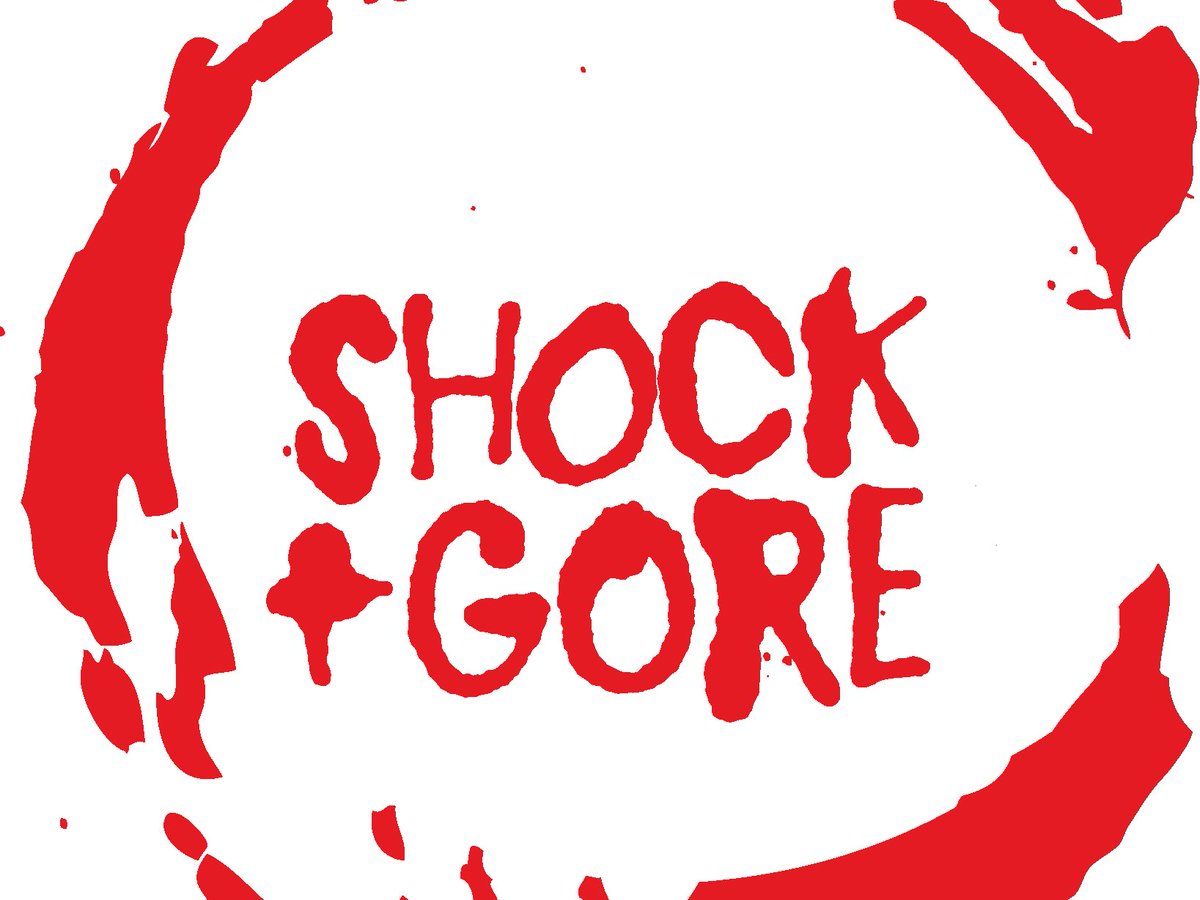Shock gore websites have become a controversial topic in the digital world. These platforms showcase extreme graphic content that pushes the boundaries of human experience. If you're curious about what these websites entail and their implications, this article will provide an in-depth exploration.
While some people are drawn to shock gore websites for entertainment, others criticize them for their explicit content. The debate surrounding these platforms raises important questions about freedom of expression, ethical responsibility, and the impact on mental health.
This article aims to shed light on shock gore websites while ensuring the information is presented responsibly. We'll explore their origins, content, risks, and legal considerations, helping you make informed decisions about engaging with such material.
Read also:Discovering The Inspirational Journey Of Brandon Biggs Pastor
What Are Shock Gore Websites?
Shock gore websites are online platforms that host graphic images, videos, and stories depicting extreme violence, death, accidents, and other disturbing scenarios. These websites often attract users seeking adrenaline rushes, morbid curiosity, or even psychological release.
Originating from the early days of the internet, these sites have evolved over time. They cater to niche audiences but remain controversial due to their explicit nature. The content typically includes real-life incidents, fictional creations, or combinations of both.
Examples of shock gore websites include infamous platforms like Gawker (before its closure) and others that specialize in gore. However, accessing such sites requires careful consideration of potential consequences.
History and Evolution of Shock Gore Websites
Early Beginnings
The concept of shock gore websites dates back to the late 1990s when the internet became widely accessible. Platforms like Rotten.com and others emerged as pioneers in hosting explicit content. These sites initially gained popularity due to their novelty and lack of regulation.
- Rotten.com: Known for its collection of disturbing images and videos.
- Gawker: Often shared controversial content before its closure.
- Other niche forums: Focused on specific types of graphic material.
As the internet grew, so did the number of shock gore websites. Advances in technology allowed for easier sharing and distribution of content, further expanding their reach.
Modern Developments
In recent years, shock gore websites have adapted to changing trends and technologies. Many now use encrypted platforms, private forums, or social media groups to share content. This shift has made it harder for authorities to regulate and monitor such activities.
Read also:Exploring Ellie Nova 2020 A Comprehensive Look At Her Impact And Journey
Additionally, the rise of user-generated content platforms like Reddit and YouTube has blurred the lines between mainstream and shock content. Subreddits and channels dedicated to graphic material continue to attract attention despite attempts to curb their spread.
Types of Content on Shock Gore Websites
Real-Life Incidents
One of the most controversial aspects of shock gore websites is their use of real-life incidents. These include videos and images of accidents, crimes, natural disasters, and deaths. The authenticity of such content raises ethical concerns about exploitation and consent.
Examples include footage from traffic accidents, industrial mishaps, and medical emergencies. While some argue that sharing such content serves educational purposes, others view it as exploitative and insensitive.
Fictional Creations
Not all content on shock gore websites is real. Many platforms also host fictional creations designed to mimic reality. These include horror films, special effects, and digital animations. While less controversial, they still raise questions about desensitization and societal impact.
For instance, horror filmmakers often collaborate with shock websites to promote their work. This synergy blurs the line between entertainment and exploitation, complicating discussions around ethical boundaries.
Risks Associated with Shock Gore Websites
Engaging with shock gore websites carries significant risks, both psychological and legal. Understanding these risks is crucial for making informed decisions about accessing such content.
- Mental Health Impact: Exposure to extreme graphic content can lead to anxiety, depression, and PTSD in susceptible individuals.
- Legal Consequences: Sharing or distributing certain types of content may violate laws related to obscenity, child exploitation, or copyright.
- Social Stigma: Being associated with shock gore websites can damage personal and professional reputations.
Parents and educators must also consider the impact of such content on younger audiences. Implementing parental controls and educating children about internet safety is essential in mitigating these risks.
Legal Considerations
Shock gore websites operate in a legal gray area, depending on the jurisdiction and type of content hosted. Some countries have strict regulations against explicit material, while others adopt more lenient approaches.
Key considerations include:
- Obscenity laws: Prohibiting content deemed offensive or harmful to public morals.
- Child protection laws: Preventing the distribution of child exploitation material.
- Copyright laws: Protecting intellectual property rights of creators.
Website operators often use offshore hosting services or anonymous platforms to evade legal scrutiny. However, this does not exempt them from potential consequences if identified and prosecuted.
Psychological Effects of Shock Gore Content
Short-Term Effects
Exposure to shock gore content can trigger immediate emotional responses such as fear, disgust, and shock. These reactions are natural but can vary depending on individual tolerance levels.
Studies suggest that repeated exposure may lead to desensitization, where individuals become less affected by extreme stimuli. This phenomenon raises concerns about its long-term impact on empathy and moral judgment.
Long-Term Effects
Prolonged engagement with shock gore websites may contribute to chronic psychological conditions such as:
- Post-Traumatic Stress Disorder (PTSD)
- Anxiety and depression
- Decreased empathy and social isolation
Individuals with pre-existing mental health issues are particularly vulnerable to these effects. Seeking professional help is advisable for those experiencing negative consequences from exposure to graphic content.
Preventing Access to Shock Gore Websites
Parental Controls
Parents and guardians can implement various measures to restrict access to shock gore websites. These include:
- Using parental control software to block explicit content.
- Monitoring internet activity through activity logs and reports.
- Engaging in open conversations about internet safety and responsible usage.
Popular tools like Net Nanny, Qustodio, and Norton Family offer robust features for managing online access. However, no solution is foolproof, and vigilance remains key.
Educational Initiatives
Education plays a vital role in preventing exposure to shock gore websites. Schools and community organizations can implement programs focused on digital literacy and responsible internet use.
Topics covered in such initiatives may include:
- Understanding online risks and dangers.
- Developing critical thinking skills to evaluate content authenticity.
- Encouraging positive online behavior and empathy.
By fostering awareness and skills, these programs empower individuals to navigate the digital world safely and responsibly.
Alternatives to Shock Gore Websites
For those seeking adrenaline rushes or morbid curiosity without engaging in harmful content, several alternatives exist. These options provide entertainment while minimizing potential risks:
- Horror Films: Explore critically acclaimed horror movies that offer thrilling experiences without crossing ethical lines.
- True Crime Documentaries: Delve into real-life crime stories presented in an educational and respectful manner.
- Virtual Reality Experiences: Engage in immersive simulations designed for entertainment and learning.
These alternatives cater to diverse interests while promoting responsible consumption of media.
Conclusion
Shock gore websites represent a complex phenomenon in the digital landscape. While they cater to niche audiences, their explicit content raises important questions about ethical responsibility, mental health, and legal implications. By understanding their origins, risks, and alternatives, individuals can make informed decisions about engaging with such platforms.
We encourage readers to share their thoughts and experiences in the comments section below. Additionally, feel free to explore other articles on our site for more insights into digital trends and safety practices.
Table of Contents
- What Are Shock Gore Websites?
- History and Evolution of Shock Gore Websites
- Types of Content on Shock Gore Websites
- Risks Associated with Shock Gore Websites
- Legal Considerations
- Psychological Effects of Shock Gore Content
- Preventing Access to Shock Gore Websites
- Alternatives to Shock Gore Websites
- Conclusion

